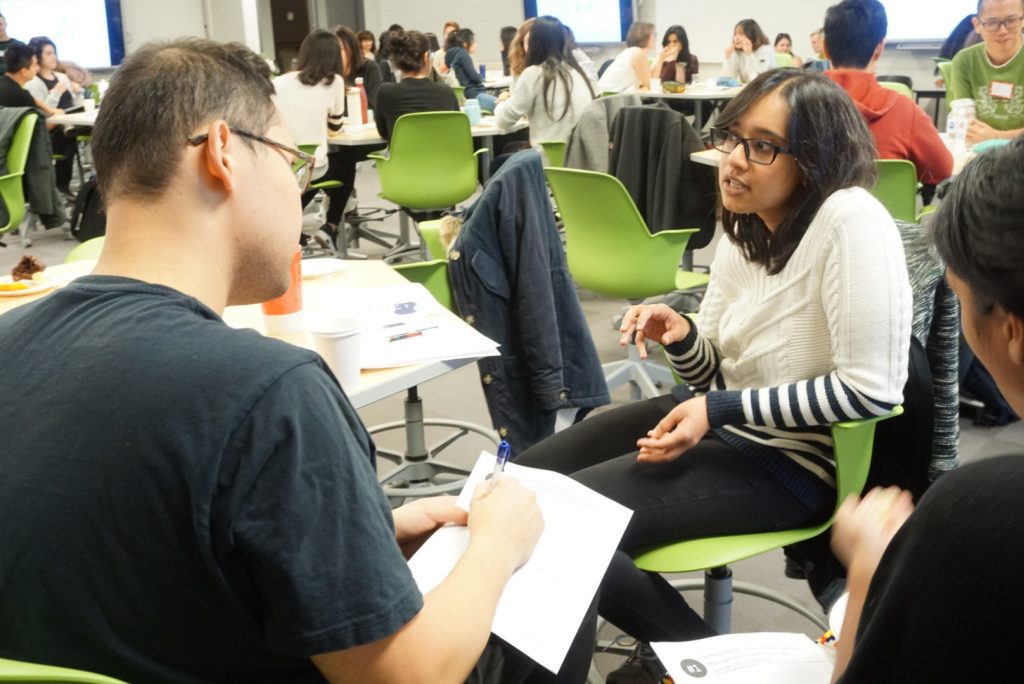
By Anusha Arif, Writer
To design for students, we need to understand the student experience. Thus, the Innovation Hub prioritizes learning to listen—interviewing empathically and attuning ourselves to the world revealed through participants’ words. Though ‘listening’ is a basic skill, listening deeply is another art, and learning is an important part of the process. Some Innovation Hub members come with experience from anthropological, sociological, or other human-centred research, but many others are new to empathic interviewing. How does this learning process go for them? What do they find challenging and interesting?
Because our interviewers are students themselves, they often find that they relate to their interviewees’ experiences. While this common ground can spark empathy, it can also create the temptation to insert yourself, your opinions, and your advice into the interviews. “It’s hard to not be like ‘Oh my god, I know right,’ and continue to comment on a certain topic,” said Gianina Ramos, Innovation Hub member.
It can also be challenging to ask open-ended questions and allow the interview to grow in useful but unscripted directions. Gianina found that transcribing the interviews helped her focus on the conversations and intuit where to ask appropriate follow-up questions. Another interviewer, Xiaoqi Gao, said, “Overall, I think the hardest part of the interview is to design questions that allow us to comprehensively acquire the information not only about a subject itself, but also on a broader aspect. I think it would be super challenging to ‘think ahead’ of the user and design something that fits their explicit needs.” And directing an interview goes beyond what is explicitly said: some interviewers say that reading between the lines and observing the underlying behaviours of interviewees are key to understanding participants.
Many new Innovation Hub members were initially daunted by the prospect of interviewing and nervous about creating a comfortable environment for interviewees to share their experiences. As they practised, however, many made new friends and saw the interviews as an enriching experience. “There is a beauty in the process of hearing from students, and true underlying power [in] the answers that are given, because it gives us an insight into one story out of thousands of others worth hearing and reflecting on,” said Zahira Tasabehji, the Design Research Lead for the Kinesiology & Physical Education project.
Many interviewers were also impressed by the number of people who reached out to them, wanting to be heard. This response shows that a human-centred approach to solving student problems can strengthen UofT’s student community. The Innovation Hub members see this in their own experiences, as other students’ stories resonate with their own lives. “Hearing from other students also about their student experience made me appreciate the plethora of activities and communities that are fostered throughout campus,” said Jamie Lee. “[It] sparked me to reflect on my own student experience, the communities I am thankful to be a part of as well as which elements could be improved.”
0 comments on “Lessons in Listening”